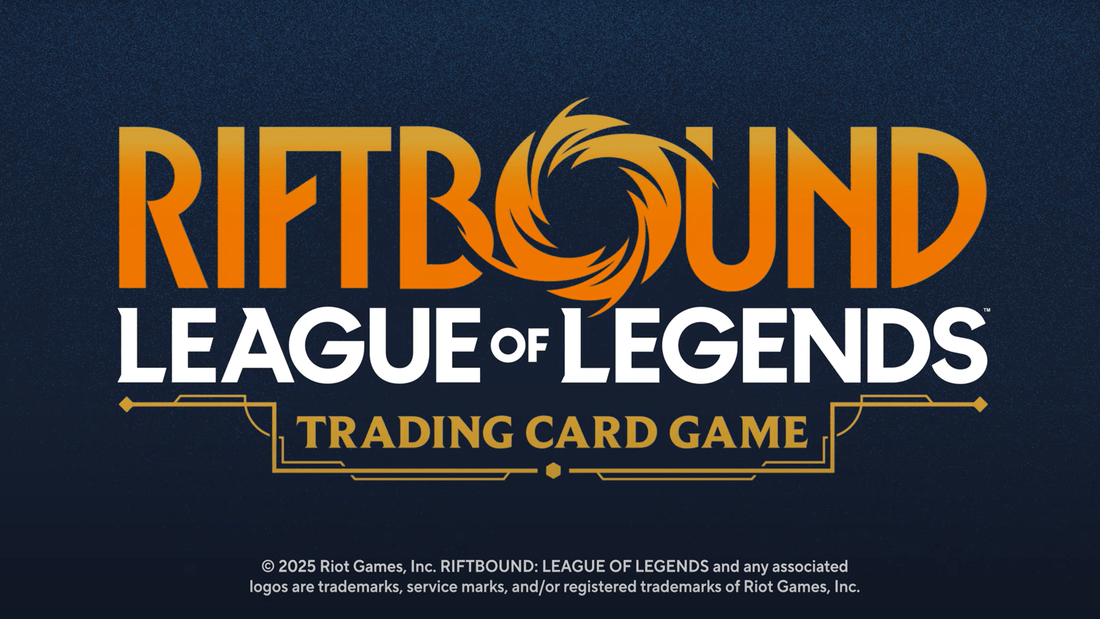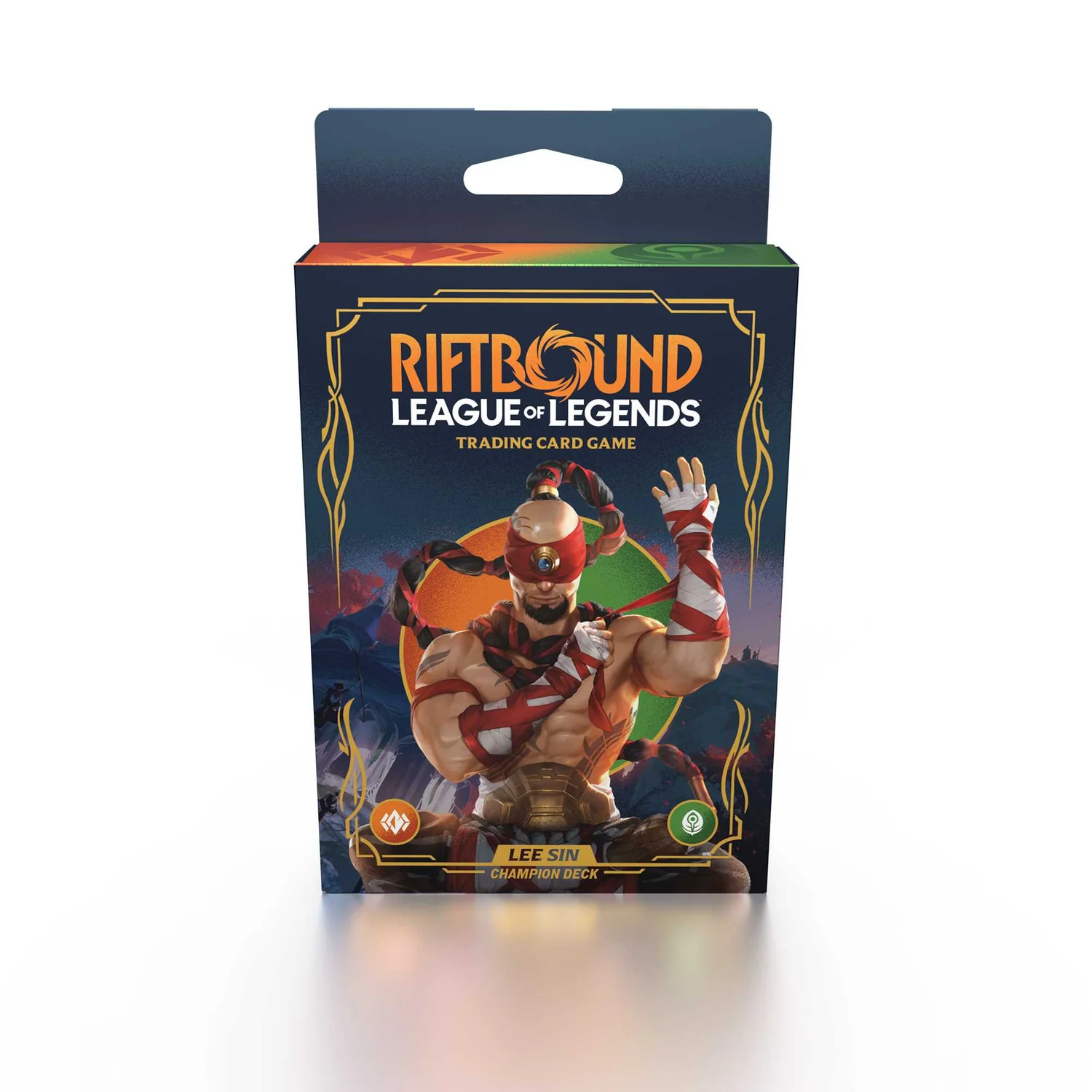
Riftbound Release Event Champion Decks
Welcome to the Riftbound Release Event
With the global launch of Riftbound: Origins, the first set for Riot’s new League-of-Legends-based trading card game, you have a chance to dive into the game from Day 1.
At the release event, you’ll likely see:
- The three pre-constructed Champion Decks: Lee Sin, Viktor, Jinx.
- Booster packs from the Origins set you can open and trade.
- Playmat, beginner tutorials, and perhaps side events for new players.
- A chance to choose your style: fast aggressive, control/swarm, or reactive midrange.
Whether you’re brand new to TCGs or a veteran, this is a great opportunity to pick up a solid deck, learn the core mechanics, and test a fun strategy right away.
The Three Starter Decks at a Glance
Here’s a summary of each deck so you can choose which one fits your style for the event (or decide to bring more than one!).
1. Lee Sin – Precision & Buffs
The Lee Sin deck is designed for players who like controlled, tactical play rather than “rush down opponent” or “go wide” strategies.
Core idea: You buff your units, you pick your moments, you don’t necessarily play the fastest, but you aim to out‐plan your opponent.
Key mechanics & strengths:
- Lee Sin’s legend determines which “domains” (colors/types) your deck uses.
- The deck includes cards that gain buffs, synergize via positioning and timing.
- As a “midrange/control” style, you’ll want to hold onto answers, build up board presence, and break through when your opponent overextends.
How to play it:
- Early game: Establish units, defend battlefields, avoid losing too much ground.
- Mid game: Use buffs, reactions, and key champion abilities to gain advantage.
- Late game: Use your stronger units and buffs to take control of a battlefield and push to victory.
Event tip: Since this deck is less about speed, in a timed format you may want to “get ahead” early if you can. Try to identify which battlefield your opponent is weak on, and make your play there.
2. Viktor – Swarm, Upgrades & Tech
The Viktor deck is for players who like value, building up many small units, and then applying tech upgrades to swing the game.
Core idea: Generate lots of small units (“Recruits” etc), build up your board, use spells/gear to upgrade or remove threats, then overwhelm.
Key mechanics & strengths:
- The deck uses many token units/recruits, which let you flood the board.
- It includes spells that “upgrade” or make the board bigger/better.
- Good for players who enjoy cumulative advantage and “engine building” rather than all-in rush.
How to play it:
- Early game: Get units out, start contesting battlefields, use cheap spells to defend or remove threats.
- Mid game: Use your recruit tokens and upgrade effects to gain a board advantage.
- Late game: With numbers and upgrades, push the opponent off battlefields or use big spells to finish.
Event tip: Because this deck relies on building up more slowly than an aggressive rush, be mindful of opponents playing high-tempo decks (like the Jinx deck). You’ll want to hold key removal/skew cards to stop their rush and then snowball once you stabilize.
3. Jinx – Aggro, Chaos & Fast-Paced

If you like fast decisions, aggressive play, and high pressure, the Jinx deck is your go-to.
Core idea: Move fast, challenge your opponent before they set up, use direct removal and tempo swings to win early.
Key mechanics & strengths:
- The deck is built around aggression: low cost units, disruptive effects, quick threats.
- Jinx’s champion ability likely rewards you for early dominance/leveraging momentum.
- Great for new players who want to “make plays” rather than wait.
How to play it:
- Early game: Hit hard, contest battlefields, force opponent to react.
- Mid game: Keep pressure up, use disruption to prevent your opponent’s build-up.
- Late game (if reached): You’ll want to close out before control decks stabilize; if the game drags, this deck may lose long-term resources.
Event tip: Because you’re going fast, watch your hand size and resource curve. If you burn through cards too quickly without finishing, you may give your opponent a chance to recover. Also, pick your target battlefields: aim for ones where you can get immediate value.
Choosing Which Deck for the Event
Here are some quick decision-tips based on your style:
- Prefer quick games, lots of action, no waiting? Go Jinx.
- Enjoy building up advantages, playing a bit slower then overwhelming your opponent, strategizing? Go Viktor.
- Like tactical plays, reacting, positioning, and fewer but meaningful turns? Go Lee Sin.
A bonus: since this is a release event, you may pick up any of these decks and perhaps upgrade them later. The deck inclusion shows good value: each is a full 56-card deck, ready to play.
How to Get the Most Out of the Event
- Play a few games vs other starters to learn your match-ups: Jinx vs Viktor vs Lee Sin.
- Keep an eye on the Booster Packs: opening one might give you a key upgrade or a fun card to swap in.
- Talk to other players: ask what colors they’re running, how they’re using their champion.
- Make sure you understand the win-condition: In Riftbound you often win by controlling battlefields or overwhelming your opponent’s board.
- If there’s a casual “play-and-learn” zone, don’t worry too much about winning: learning the deck’s rhythm is more valuable right now.
A Sample Game Flow
Here’s a simplified “what you might see” for each deck during a game.
Jinx
- Turn 1: Play low-cost unit, maybe direct damage/disrupt.
- Turn 2: Push another threat, maybe surprise your opponent with a removal.
- Turn 3-4: Hit two battlefields, force your opponent to defend both, try to convert one into a win.
- By Turn 5-6: If you’ve got momentum, you might finish. If not, you’re in danger of being overtaken.
Viktor
- Turn 1: Play recruit or small unit, hold some tech.
- Turn 2: More units, maybe a battlefield bonus, set up for next turn.
- Turn 3–4: Use spells/effects to upgrade your units, generate value.
- Turn 5+: With board advantage, start pushing for win, possibly sweeping opponent’s board or winning by card advantage.
Lee Sin
- Turn 1: Play a known unit, possibly hold some answer spells.
- Turn 2: Use buff or positioning to strengthen your presence.
- Turn 3: React to opponent play (e.g., using your champion’s ability or a buff).
- Turn 4+: Start converting your built units into winning threats, exploiting your buffs or key interactions.
- Keep monitoring opponent’s plays and look for the moment to attack.
Final Thoughts
The release of Riftbound is a strong moment to jump into a TCG: you’re all starting fresh, and the three starter decks are well-designed to give each player a clear identity and path. Pick the deck that suits your style, learn its flow, play some matches, and enjoy the event atmosphere.


